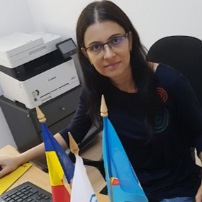Synthesis, Characterisation and Application of Phytosynthesized Nanomaterials
A special issue of Materials (ISSN 1996-1944). This special issue belongs to the section "Advanced Nanomaterials and Nanotechnology".
Deadline for manuscript submissions: closed (20 May 2023) | Viewed by 2351
Special Issue Editor
Interests: biomaterials; medical and pharmaceutical biotechnology; environmental biotechnology; biosynthesis; antimicrobial activity; modelling; antimicrobial coatings
Special Issues, Collections and Topics in MDPI journals
Special Issue Information
Dear Colleagues,
In the last few years, new nanoparticle preparation methods have emerged, replacing the usual reagents with plant extracts obtained in different conditions.
Green synthesis uses bio-reduction, which is 100% eco-friendly, energy-saving, and economically viable. This Special Issue will focus on the development of new bio nanomaterials with increased antioxidant and antimicrobial properties according to the end users’ needs. If the final users and the manufacturer are aware of the main biological activities of the used plant extract they will be able to act accordingly considering the final goal.
This Special Issue of Materials will cover recent advances in the synthesis, characterisation and application of phytosynthesized nanomaterials.
We welcome the submission of full papers, communications, and reviews. Potential topics include, but are not limited to:
- Nanomaterials in the food industry (nanosensors, packaging, etc.);
- Nanomaterials in medicine (biomedical devices, drug delivery, imaging, etc.);
- Nanomaterials in agriculture (nanomaterials in sensing systems, etc.).
A particular topic of interest is the safety of novel nanomaterials intended for use on humans.
Dr. Camelia Ungureanu
Guest Editor
Manuscript Submission Information
Manuscripts should be submitted online at www.mdpi.com by registering and logging in to this website. Once you are registered, click here to go to the submission form. Manuscripts can be submitted until the deadline. All submissions that pass pre-check are peer-reviewed. Accepted papers will be published continuously in the journal (as soon as accepted) and will be listed together on the special issue website. Research articles, review articles as well as short communications are invited. For planned papers, a title and short abstract (about 100 words) can be sent to the Editorial Office for announcement on this website.
Submitted manuscripts should not have been published previously, nor be under consideration for publication elsewhere (except conference proceedings papers). All manuscripts are thoroughly refereed through a single-blind peer-review process. A guide for authors and other relevant information for submission of manuscripts is available on the Instructions for Authors page. Materials is an international peer-reviewed open access semimonthly journal published by MDPI.
Please visit the Instructions for Authors page before submitting a manuscript. The Article Processing Charge (APC) for publication in this open access journal is 2600 CHF (Swiss Francs). Submitted papers should be well formatted and use good English. Authors may use MDPI's English editing service prior to publication or during author revisions.
Keywords
- phytosynthesized nanomaterials
- plant extract
- natural compounds
- functional nanostructured materials
- antimicrobial






